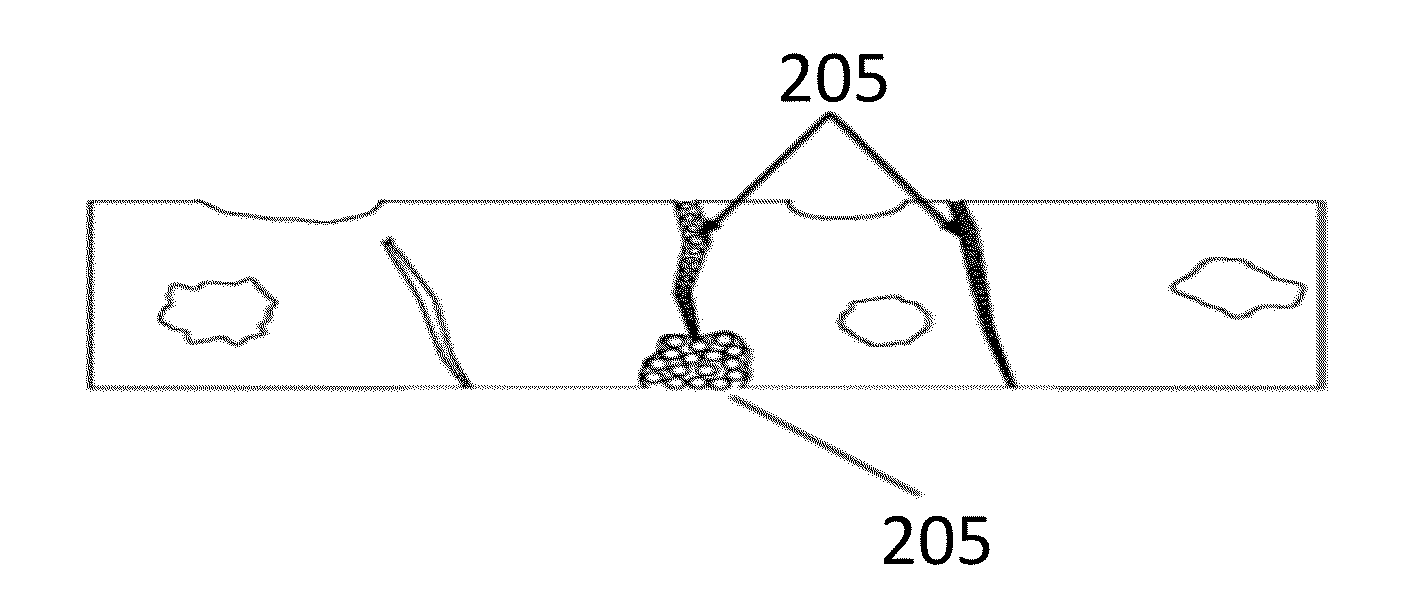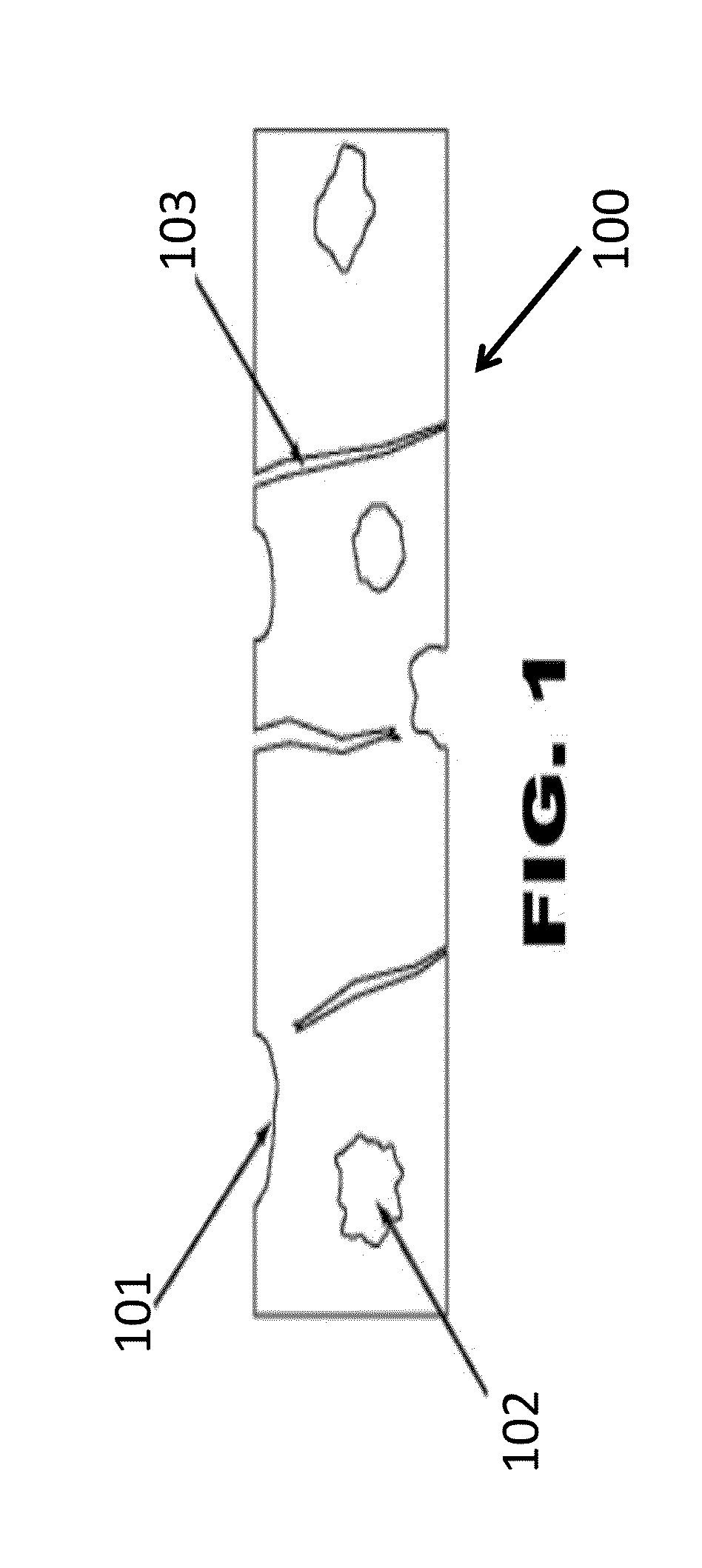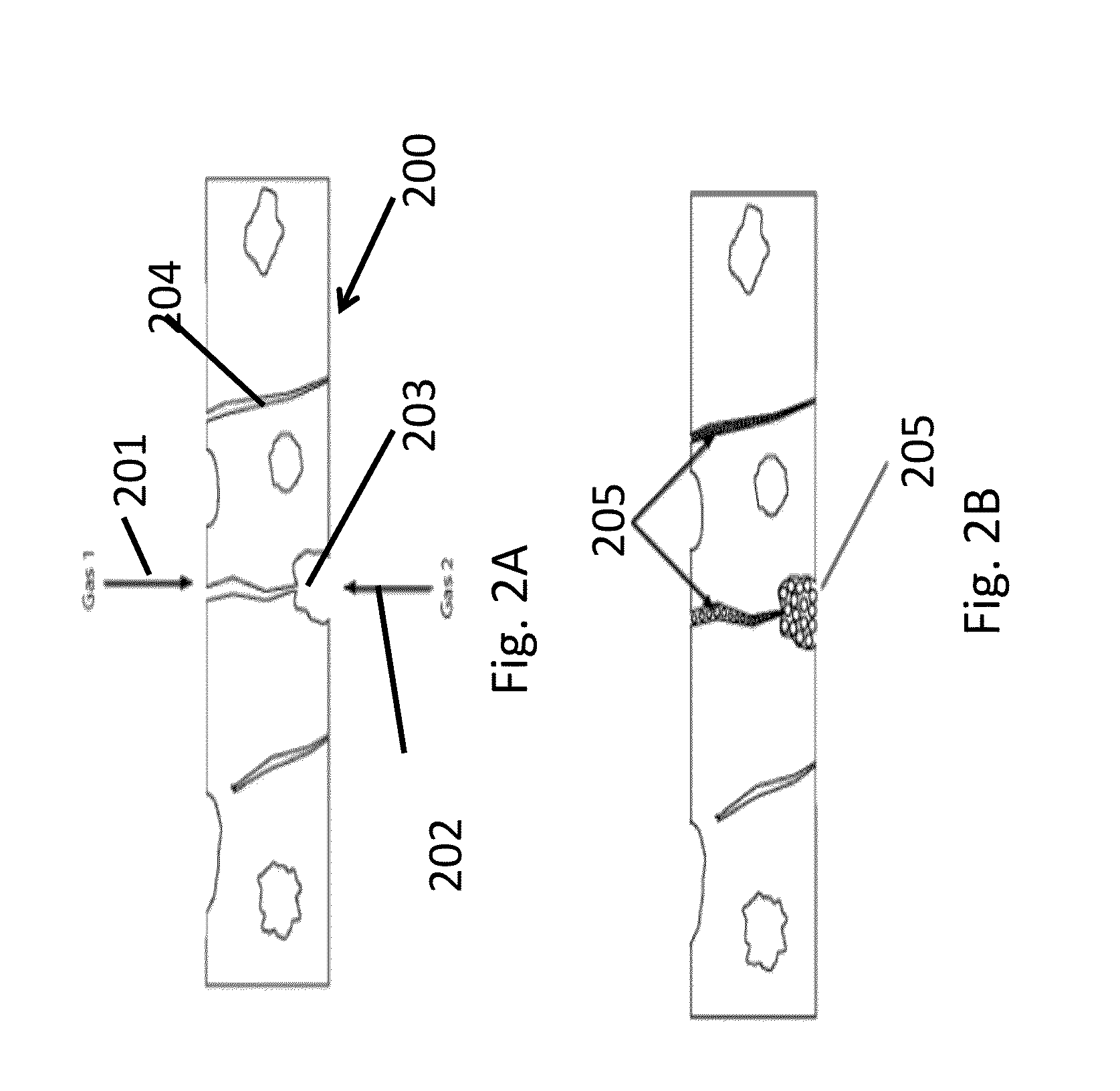Method For The Detection Of Defects In Gas-Barrier Films Using Quantum Dots
a gasbarrier and quantum dots technology, applied in the field of thin film gasbarriers, can solve the problems of affecting the stability and performance of electronic devices, affecting the performance of optical radiation measurement, and affecting the stability of electronic devices
- Summary
- Abstract
- Description
- Claims
- Application Information
AI Technical Summary
Benefits of technology
Problems solved by technology
Method used
Image
Examples
example 1
CdS
[0042]CdS quantum dots may be formed from the gas phase reaction of helium gas streams containing Me2Cd and H2S in the presence of pyridine gas. Typical reaction conditions include a He flow rate of ˜600 cm3 min−1 and a 30-fold excess of H2S to Me2Cd. The particle size may be controlled by varying the pyridine concentration and / or the reaction temperature. Preferably, pyridine:Me2Cd ratios in the range 1:20 to 2:1, and temperatures between room temperature and 200° C. are employed. It has been found that increasing the pyridine concentration reduces the particle size, while the particle size increases with increasing temperature.
[0043]The absorption of the CdS nanoparticles may be tuned from the UV to cyan (bulk band gap ˜512 nm) depending on the particle size. For example, nanoparticles in the size range 2-20 nm may be expected to emit between approximately 320-500 nm, corresponding with UV to cyan light.
example 2
CdSe
[0044]Reaction conditions similar to those outlined for CdS (above) may be used to synthesize CdSe quantum dots [N. L. Pickett et al., J. Mater. Chem., 1997, 7, 1855], substituting H2S for H2Se. Higher pyridine concentrations may be used to control the particle size (up to 150:1 pyridine:Me2Cd).
[0045]The absorption of the CdSe nanoparticles may be tuned from the blue to the deep red (bulk band gap ˜717 nm) depending on the particle size. Nanoparticles in the size range 2-20 nm may be expected to emit between approximately 490-700 nm, corresponding with blue to deep red light.
example 3
ZnS
[0046]Reaction conditions similar to those outlined for CdS (above) may be used to synthesize ZnS quantum dots [N. L. Pickett et al., J. Mater. Chem., 1997, 7, 1855], substituting Me2Cd for Me2Zn. Higher reaction temperatures (up to 300° C.) may be advantageous.
[0047]The absorption of the ZnS nanoparticles may be tuned across the UV spectrum (bulk band gap ˜344 nm) depending on the particle size. Nanoparticles in the size range 2-20 nm may be expected to emit between approximately 235-340 nm.
PUM
| Property | Measurement | Unit |
|---|---|---|
| pore diameters | aaaaa | aaaaa |
| pore diameters | aaaaa | aaaaa |
| diameters | aaaaa | aaaaa |
Abstract
Description
Claims
Application Information
 Login to View More
Login to View More - R&D
- Intellectual Property
- Life Sciences
- Materials
- Tech Scout
- Unparalleled Data Quality
- Higher Quality Content
- 60% Fewer Hallucinations
Browse by: Latest US Patents, China's latest patents, Technical Efficacy Thesaurus, Application Domain, Technology Topic, Popular Technical Reports.
© 2025 PatSnap. All rights reserved.Legal|Privacy policy|Modern Slavery Act Transparency Statement|Sitemap|About US| Contact US: help@patsnap.com



